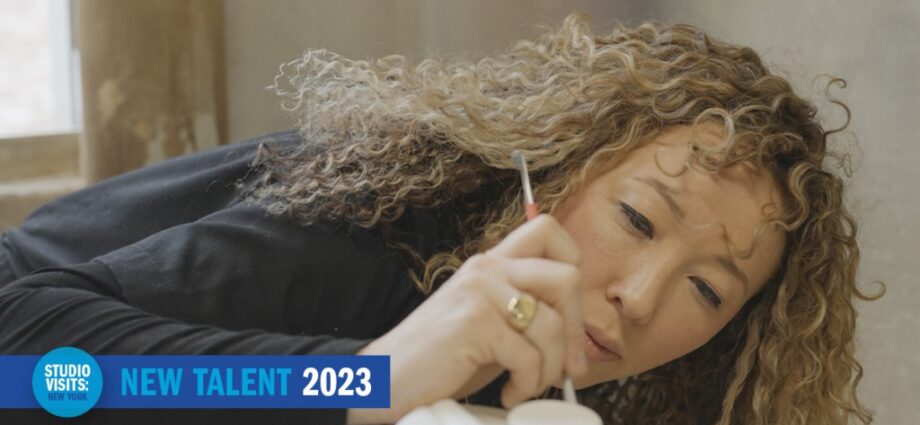Art in America’s Summer 2023 New Talent issue includes a series of interviews with five New York–based artists to watch. A.i.A. senior editor Emily Watlington and photo editor Christopher Garcia-Valle visited each artist in their studio to learn more about their art-making process, inspirations, and influences. Below, in an edited version of the conversation, sculptor Catherine Telford Keogh explains how she conglomerates trash and landfill into striking sculptures.
Hardgood & Dolly (2023) is a piece of compressed landfill I extracted from Dead Horse Bay [between Brighton Beach and Fort Tilden in Brooklyn]. In the Industrial era, it was also home to fish oil factories, and garbage incinerators. In the 1950s, a series of highways decimated a number of low-income neighborhoodsin Brooklyn, and they moved all of those folks’ goods to Dead Horse Bay, then used them to extend the shoreline. The trash and their belongings were compacted, then covered with sand. Recently it’s been eroding.
Because this was the 1950s, there’s more glass than plastic. I extracted a hunk of landfill that included all these products that have been vitrified over time. It contains rubber, cement, plant matter, packaging, sand, and other miscellaneous objects. My students helped me drag this piece back, and it spawned my most recent show, “Shelf Life,” at Helena Anrather Gallery in New York.
Another piece in that show, Compost Index 3 with Volumes 2.1, 2.2, 3.1, 4.1, 4.2, 5.1 (2023), involves repurposed tiles I got from Marble Expo on Facebook Marketplace. The onyx tiles were originally extracted from Karachi, Pakistan, and brought to Marble Expo in the Bronx, which then sold them to corporations, a bank, and a Best Western. I purchased the leftovers. The multicolored onyx has all this depth, so you can really see the earth processes that happened over eons. I wanted to position them [on the floor] so that they signify earth or ground, but also a countertop at the same time. I waterjet-cut different advertisements in the tiles, borrowed from things like moisturizers that promise a healthier or more efficient body. I also sandblasted images of things that I found on the ground in my neighborhood: lottery tickets, gum, cigarettes, Modelo beer cans. I photographed them, turned them into stencils, and then sandblasted them into the tiles. Sandblasting is almost like a mechanized geologic process, but it also creates this ghostly or fossilized image of the waste.
I also remade plastic vessels in glass that you can carry around—like detergent bottles, milk jugs, or motor oil containers. I work with containers a lot. I’m interested in how they promise space cordoned off from temperature, climate, and decay, but are also everywhere in landfills. Positioning vessels on the onyx tiles, I wanted to point to deep geologic processes that have happened over years and years. —As told to Emily Watlington


